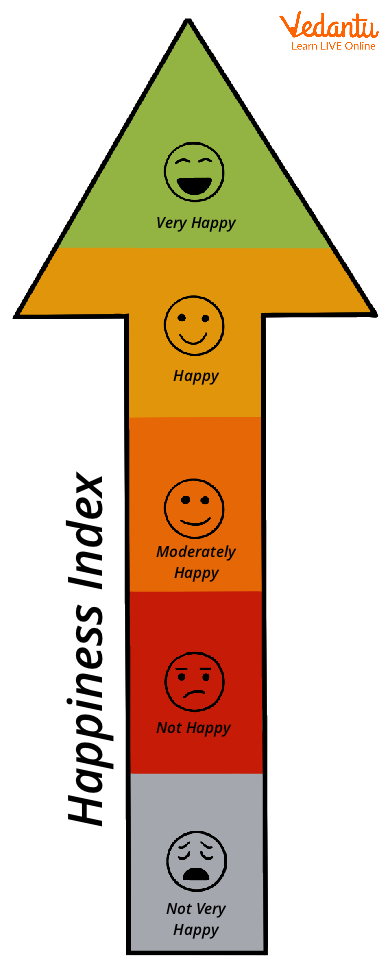




Happiness Economics: An Introduction with Examples of Happiness
Unlike traditional metrics that only consider income and wealth, the economics of happiness seeks to link economic decisions to a broader measure of well-being and happiness.
Happiness economics assesses a broader range of factors influencing well-being, life quality, and self-reported happiness levels. Happiness can now be measured in various ways, including Gross Domestic Happiness. (GDH) Bhutan, France, New Zealand, and the United Kingdom have all begun to use "happy indexes" to gauge economic performance to varying degrees.
Happiness economics studies the relationships between personal contentment and monetary concerns. It is measured through surveys in which respondents rate their level of happiness about several quality-of-life variables.
Happiness economists frequently use Bhutan's gross national happiness index as a financial statistic.
Finland is ranked first in the 2019 Gross National Happiness Index, while South Sudan is ranked last.
Happiness Factors: Things Influencing Happiness
Income - Albeit with diminishing returns.
Work Quality - The level of satisfaction gained through employment weighs more heavily than pay. Boring, monotonous work is unlikely to be enjoyable. Self-employment or innovative, skilled labour can increase self-esteem and job satisfaction.
Quality of Consumption - Tibor Scitovsky argues in "The Joyless Economy" (1976) that equating consumption with welfare is incorrect. It is dependent on the quality of consumption, according to Scitovsky. For example, while fast food and television can provide temporary happiness, they rarely provide long-term satisfaction. Scitovsky believes that risky, skilful consumption can boost happiness and a sense of accomplishment.

Happiness Index Measurement
How is Happiness Index Measured?
Every year, researchers studying happiness economics ask respondents to rate their happiness level on various quality-of-life variables. For example, the study asks respondents to rate their level of happiness (on a scale of 1-10) based on factors such as political freedom, access to healthcare, and educational quality in their respective countries.
After the responses are collected, they are evaluated and processed to produce a score representing the overall happiness level of a given population.
Case Study
Highlight a Case Study of Developed Countries that Use Happiness Economics.
In the last few decades, happiness economics indicators such as Gross Domestic Happiness (GDH) have emerged to reflect this new paradigm in economic theory.
According to the 2021 World Happiness Report, the happiest countries in the world are Finland, Denmark, Switzerland, Iceland, the Netherlands, Norway, Sweden, Luxembourg, New Zealand, and Austria.
European countries, known for their happiness economies, hold nine of the top ten positions. The Organisation for Economic Cooperation and Development (OECD) gathers data from its 35 member countries by assessing factors such as housing, income, civic participation, the environment, and health.
Conclusion
Economic theory is a social science. As a result, it is classified alongside other social sciences such as psychology. However, economists have frequently attempted to portray themselves as a precise science. Their models rely on intricate mathematical equations validated by empirical validity rather than nave speculation. It also explains why economic concepts such as utility arose. Utility and pleasure are inextricably linked, and happiness is the ultimate goal of all economic endeavours.
FAQs on Happiness Economics
1. Can happiness measures influence economic, social, and investment policy?
Unemployment is a great example. Government initiatives to lower unemployment appear to improve people's moods and make them happier. When the effects of a 1% change in the jobless rate and a 1% change in the inflation rate are compared, a 1% increase in unemployment has a greater impact on people's happiness than a 1% increase in inflation. This demonstrates the importance of unemployment goals in comparison to price goals. Happiness and health have a strong and consistent relationship. Less healthy people are less happy, implying that policies addressing people's health concerns would increase their happiness.
2. What is the relationship between happiness and income?
According to neoclassical economic theory, higher income is associated with higher utility and financial welfare.
When people's income is low, it is widely assumed that increasing their income will make them happier. As a person's income rises, so do their ability to purchase items and services deemed necessary for the necessities of life, such as food, shelter, healthcare, and education. As a result, traditional economic theories concerning income and utility are quite strong at low-income levels.
However, the marginal utility of wealth and income can rapidly decline at a given income level, with increasing income not affecting overall utility or happiness.
3. In terms of economics, what exactly is Happiness?
Each person defined happiness differently for himself in a survey. People are simply asked how content or pleased they are in general! On the surface, it appears difficult to combine these responses and derive an overall measure of happiness because each person is free to define happiness, but they are very comparable when looking at what people say about the causes of their happiness.
The degree to which people achieve their personal goals of high living standards, contented and happy families, and fulfilling employment is measured by their level of happiness.





















